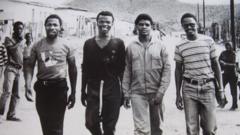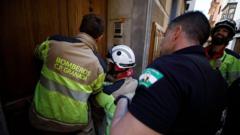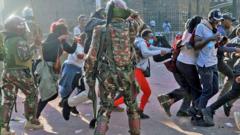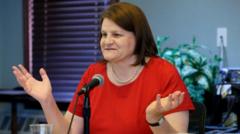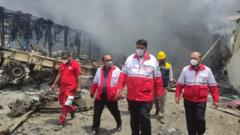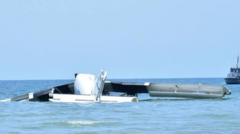A tragic plane crash in South Korea has ignited debates over airport safety protocols following the deaths of 179 individuals. Aviation experts are questioning the presence of an unusual concrete wall located only 250 meters from the runway, which the ill-fated Jeju Air plane collided with after aborting its landing. Eyewitness footage depicts the aircraft veering off course and crashing into the wall, resulting in a fireball, leading many to speculate about the wall's implications on the severity of the crash.
### Investigating the Impact of a Wall Near Runway in South Korea Plane Crash
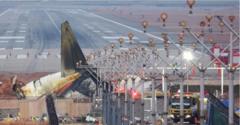
### Investigating the Impact of a Wall Near Runway in South Korea Plane Crash
Authorities scrutinize a concrete wall's potentially critical role in the Muan International Airport disaster, raising aviation safety concerns.
David Learmount, an air safety expert, argues that the wall's presence likely exacerbated the incident, asserting that the jet might have landed safely had the obstruction not existed. The pilots were forced to abort the initial approach after reporting a bird strike and ended up landing the aircraft without any functioning landing gear. Learmount notes that the crash's deadliness stemmed from the plane's collision with the rigid structure, which serves as a localiser for aircraft navigation during landings.
Despite the South Korean transport ministry stating that similar navigational systems exist at other airports both domestically and internationally, the appropriateness of using concrete for such structures is under review. Aviation professionals pointed out the importance of ensuring that nearby obstacles are designed to be frangible, meaning they would crumble upon impact, as opposed to being rigid and unyielding. Questions have also emerged about whether the pilots were adequately informed of the wall's presence, especially given they were approaching the runway from an atypical direction.
Chris Kingswood, a veteran pilot, expressed surprise that the airport structures conformed to industry standards, noting the presence of similar obstacles at other airports that could pose risks. Further questions arise in the wake of the crash, with aviation analyst Sally Gethin emphasizing the need for clarity about the pilots' knowledge regarding the runway's layout and any directives from the control tower.
As the investigation unfolds, critical insights into airport safety measures and the design of navigational aids may emerge, potentially altering future aviation protocol and improving safety measures to avoid such tragedies.
Despite the South Korean transport ministry stating that similar navigational systems exist at other airports both domestically and internationally, the appropriateness of using concrete for such structures is under review. Aviation professionals pointed out the importance of ensuring that nearby obstacles are designed to be frangible, meaning they would crumble upon impact, as opposed to being rigid and unyielding. Questions have also emerged about whether the pilots were adequately informed of the wall's presence, especially given they were approaching the runway from an atypical direction.
Chris Kingswood, a veteran pilot, expressed surprise that the airport structures conformed to industry standards, noting the presence of similar obstacles at other airports that could pose risks. Further questions arise in the wake of the crash, with aviation analyst Sally Gethin emphasizing the need for clarity about the pilots' knowledge regarding the runway's layout and any directives from the control tower.
As the investigation unfolds, critical insights into airport safety measures and the design of navigational aids may emerge, potentially altering future aviation protocol and improving safety measures to avoid such tragedies.


